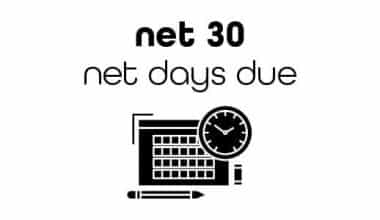Organizations increasingly rely on internal business communication tools to boost efficiency and productivity, regardless of where workers are. This will help streamline IT management, locate user-friendly solutions, and inspire staff. Therefore, communication is essential for launching and growing a successful business. External and internal communication involves a wide range of business communication tools. These tools help enhance your business productivity and online collaboration and productivity platforms. This article will discuss some practical online business communication tools to help you in business.
What Are the Basic Tools of Business Communication?
There is a vast range of communication tools used for both internal and external communication. These tools include task management, Instant messaging, voice, video conferencing tools, Document collaboration tools, Knowledge center, mail, email, and online platforms for working together and getting work done. We begin with some fundamental business communication tools
#1. Task Management Tools
Teams that are dispersed or offsite do not have the luxury of visiting each other’s workplaces to see what their colleagues are working on or to check in on a deadline.
That is why task management software is so helpful. Even if your organization has the most powerful technology stack, achieving your goals will be nearly tricky if your duties are not correctly handled.
You can use a task management application to build project calendars, assign work to team members, and set deadlines. Once a project is launched, the tool will track how projects are progressing and whether your team is staying on time; task management tools are also ideal for maintaining effective business communications. They can handle project discussions because every comment or piece of input is stored in cards or threads. A platform like Trello, for example, uses specialized lists, boards, and timelines to keep tasks organized. If someone on your team has a complaint about a task or needs to adjust a schedule, all they have to do is @mention you, and you’ll be notified.
#2. Instant Messaging
Instant messaging is a must-have tool for fast-paced teams who need to interact and work in real time. While email is intended to accomplish this, we are all aware of its flaws: messages are only read if the recipient continuously monitors their mailbox.
When it comes to emails, there is a propensity to add length when often a simple answer is all that is required. This may discourage prompt responses.
Instant chat platforms are perfect for teams bogged down in superfluous email threads or who wish to collaborate in real-time without the time lag that comes with inboxes.
Slack is one of our favorite team business communication tools. It’s a simple, user-friendly instant messenger that lets you connect with individuals or groups in real time.
Channels can be set up for separate teams so that your design team doesn’t hear about the invoices that the finance department is following, and they’re also an excellent area to boost efficiency. Instead of gathering your team for lengthy morning meetings, consider Slack’s morning stand-up function to obtain a fast overview of what everyone is doing on that day
However, If you’re using Workvivo for your social intranet, you can integrate Slack’s instant messaging services into your activity feed. So, even if your staff isn’t using Slack, they won’t miss any essential communications!
#3. Voice and Video Conferencing Tools
Including phone and video conferencing tools in your technology platform is essential. Not only can your team use these technologies to have virtual meetings and discuss projects, but they can also communicate with clients and find new business opportunities.
Starting up a video chat with your team is as simple as scheduling a meeting time, providing a link, and waiting for them to join, depending on your service. You can host meetings, exchange presentations, and communicate with clients from anywhere with a tool like Zoom (which already has over 300 million users!).
When the meeting begins, you can collaborate with a maximum of 25 people by sharing your screen and linking files. And if someone cannot attend the meeting, you may record it and send it to them once you’re through!
It’s challenging to keep track of all your apps if you use many of them. Fortunately, you can use the App Launcher in a product like Workvivo to connect and use apps directly from the dashboard. Zoom integration with Workvivo enables your team to launch video conferences directly from their social intranet, saving them time switching between applications.
#4. Document Collaboration Tools
Consider what a workplace would look like without a document collaboration tool—how could a team join forces and collaborate on a project without them? There are numerous document collaboration solutions to select from; the best part is that many are free. Google Workspace is a teamwork tool that enables teams to work on documents, spreadsheets, slideshows, and forms. Share a link with a colleague, remark, suggest, and edit projects in real time.
#5. Knowledge Center
Educating your employees on as many aspects of your organization as possible is an excellent way to encourage them and increase their understanding of your product.
Taking out time to educate them is the tricky part. Holding meetings and disseminating large amounts of information isn’t the ideal strategy to encourage them to learn more about your organization and enable them to solve problems on their own
A knowledge center, sometimes known as a “base,” is a library where businesses can keep policies, training manuals, wikis, and other resources. You can also make company announcements, update mission statements, and develop company goals.
However, communication tools enable you to create an organized knowledge base and easily update documents as needed.
#6. Mail
Even with today’s communication options, ordinary postal mail remains a potent commercial tool. It adds a personal touch and is frequently used to deliver protected documents, contracts, and purchased items to clients. A usps.com or Stamps.com account (in the United States) allows you to print postage from your computer and is a simple way to handle mail from your home or workplace. There are several carriers available for shipping mail internationally. Learn which carriers are the most dependable in your business region. You may compare prices, delivery dates, and tracking options to find the best deal.
#7. Email
Even if you currently have a personal email address, having a business email address will assist you in communicating with clients, vendors, and internal coworkers. It is critical to check email on a daily basis. Depending on the sort of account you have, you can access a variety of email services. For example, you can trace emails for particular accounts to guarantee that the receiver reads them. With different sorts of accounts, you can also delay sending outgoing emails, filter received emails, and set up automatic responses.
Gmail, Outlook, and Yahoo are email hosting platforms. There are others as well. These platforms will give you your business email address for an additional fee. For example, you may pay the price to host [email protected] on one of the email platforms.
#8. Google Voice and Other Internet Calling Services
Internet calling is a method of making phone calls over the internet. There are numerous internet calling services. Google Voice is the most popular and accessible option. Google Voice includes voicemail, SMS, and texting, as well as a local phone number. Users can send complimentary text messages, modify their voicemail, read the text transcript of their voicemail, and more. Users can make or receive phone calls or texts from their computer or smartphone.
Google’s voicemail service is now free for all Gmail users. Other internet calling service providers include Grasshopper, MightyCall, Nextiva, DingTone, Telzio, Freedompop, Line2, Voiceably, and OnSIP. Each offers a monthly fee-based service with varying features, capabilities, strengths, and shortcomings.
Which Is the Most Successful Business Communication Tool?
Email, arguably the most popular business communication tool, opens many communication avenues. Employees can use the application to share vital information, while managers and executives can interact with reports or higher-level management. Since email has such a large audience, businesses may use it to stay in touch with customers, provide and receive feedback, solicit new customers, and even create a channel for customers to contact liaisons or executives at any time of day. Email also allows users to send and receive data as attachments to messages, allowing technology companies to provide vital patches and updates in real time.
What Are the 7 Types of Business Communication?
Most enterprises use one of four types of business communication: internal (upward and downward), external, or horizontal/lateral. Let’s take a closer look at the many types of business communication.
#1. Internal Business Communication
Internal business communication refers to the interaction between members of an organization. It includes both official and informal communication modalities. Internal communication occurs when several departments send information to the organization’s personnel. Effective internal communication is critical for increasing productivity and satisfaction. There are primarily two types of internal corporate communication:
- Internal Upward Communication: For example, suppose an organization’s HR team has created a report on a specific topic, which is then delivered to the HR manager. This is an example of upward internal business communication.
- Internal Downward Communication: When the CEO of a company establishes new instructions and distributes them to all employees. This is how internal downward business communication occurs within an organization.
#3. Horizontal/Lateral Business Communication
Horizontal or lateral business communication refers to communication that occurs at a horizontal level, i.e., among coworkers in an organization or corporation. It is mainly done through written or spoken communication. This business communication occurs when messages are exchanged between a single department, between departments, or between individuals with comparable levels of expertise.
The information communicated via this method is only available to those of the same rank. Communication at equal hierarchy levels is essential for achieving functional success and cooperation. For example, the marketing head of a company contacts the production head of the same company to discuss the newest marketing trends, product demands, and consumer wants. The message will be distributed appropriately through effective communication among department managers.
#4. External Business Communication
External business communication occurs when information about a business firm is sent to another business organization or authorities from another organization outside the business environment. Organizations frequently communicate with other organizations to expand their commercial potential. Unlike other types of business communication, external business communication is mainly done through written or vocal means.
External business communication is classified into two types: formal and informal. Letters, reports, presentations, memoranda, and other formal external business communication are examples of external business communication. Still, informal external business communication can take many forms and is generally outside the control of an organization.
For example, a company may use various forms of advertising, radio channels, social media commercials, etc., to spread the word about the great prices and offers they have available on their web platform. This is a prime example of what is known as “external communication.”
Conclusion
It’s vital to remember that not all internal business communication tools are created equal; specific programs excel in certain contexts, while others are best used alone. We recommend you thoroughly analyze your use case for these business communication tools and consider which features are most important for workplace interactions and meetings. Set a requirement for the tool and discuss your possibilities with your team.
Related Articles
- Short-Term Loans for Your Business: A Good Idea?
- Instant Coffee Brands: The Best Low Acid & Decaf Brands(+Reviews)
- TASK MANAGEMENT TOOLS: 24 Best Task Management Tools for Teams [2023]
- TASK MANAGEMENT SYSTEM: Best Free and Paid Options In 2023
- COMMUNICATION COACH: Effective Communication






